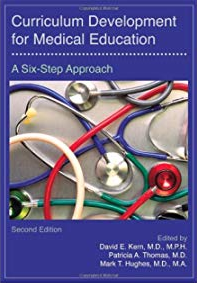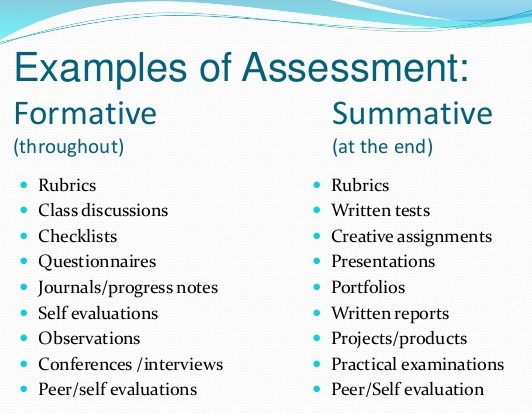Another popular curricular development approach commonly used within the medical community is a 6-step approach first developed by Dr. David Kern in 1998.
He developed this model from numerous generic approaches set forth by McGaghie, Tyler, Taba, and others, who originally advocated linking curriculum to health care.
While the center doesn’t specifically use this approach, we use aspects of this approach in completing the ADDIE model that we do use.
Take a look at this approach…
6-Step Approach

- Step 1: Problem identification and general needs assessment
- Step 2: Targeted needs assessment
- Step 3: Goals and Objectives
- Step 4: Educational Strategies
- Step 5: Implementation
- Step 6: Evaluation and Feedback
Here is a little more detail about each.
Step 1: Problem identification and general needs assessment

This step may relate to a specific health care problem or a group of health care challenges. Kern states that it also may relate to the qualities of the physician and the health care needs of society to produce the quantity and type of physicians. The identification requires an analysis of the current approach, if any. This is followed by the identification of an ideal approach that describes how patients, practitioners, medical educational system, and society should be addressing the need. The difference in the current and the ideal approach represents the general needs assessment.
Step 2: Targeted needs assessment
This step involves assessing the needs of your specific targeted group, i.e medical students, nursing students, residents, staff nurses, etc…
This can be done through different and multiple methods to include the following:
| Informal Discussion | Formal Interviews | Focus Group |
| Questionnaires | Direct Observation | Tests |
| Audits of current performance | Strategic Planning |
Step 3: Goals and Objectives
Once your learners have been identified, you can now define goals and objectives. Start off broad and general and then narrow down to SMART goals.
| Objectives | Specific Measurable Achievable Realistic Have a time component |
This is also where you will identify the domain of your objectives: cognitive (knowledge), affective (attitudinal), or psychomotor (skill/behavior).
The development of goals and objectives is critical because they help to determine curricular content and learning methods and help focus the learner.
Dr. David Kern
Step 4: Educational Strategies
Educational strategies involve both content and methods. Once the learners have been identified and the goals and objectives have been clarified, next you will want to define some educational methods that will achieve your educational objectives.
Examples of educational methods:
| Readings | Lecture | Programmed Learning |
| Discussion | Reflection | Feedback on Performance |
| Small Group Learning | Problem-based Learning | Team-based Learning |
| Learning Projects | Demonstrations | Role Plays |
| Artificial models and simulation | Standardized Patients | Audio/video review |
Guidelines for choosing educational methods:
- Maintain congruence between objectives and educational methods
- Use multiple educational methods or have alternatives to the primary methods
- Choose methods that are feasible with your resources.
Step 5: Implementation
I would like to say that this is the step that you give your curriculum, but it is more involved. Kern, in this step, is comprised of several components: obtaining politial support, identifying and procuring resources, identifying and addressing barriers, and introducing and piloting the curriculum, prior to any administration of the curriculum.
It is the step that converts a mental exercise to reality
Dr. David Kern
Step 6: Evaluation and Feedback
This step has several components because you are not only assessing individuals, but also the program and curriculum. There also could be varying degrees of assessment (formative or summative) that you or the organization have decided to build into the curriculum
| Formative Evaluation | To provide ongoing feedback so that learners can improve |
| Summative Evaluation | To provide a final “grade” or evaluation of performance |

An important thing to remember that the evaluation and feedback step is important in seeing the overall effectiveness of your program, and can be used to request more funding and resources, or to answer research questions about the effectiveness of the educational approach.
One thing to note, and mentioned by Kern, curriculum development is rarely in sequence and rather dynamic, so you may be doing step 1 and step 2 concurrently for example. You may also be sending requests out for staff or educators for information, so while you wait for them to get back to you, you may be able to move on to the next step or work on other components. Additionally, your availability of resources, or lack thereof, that you identify in step 5 may cause you to alter the objectives in step 3.
So while curriculum development “can end,” it is more likely that the curriculum will really evolve over time.
